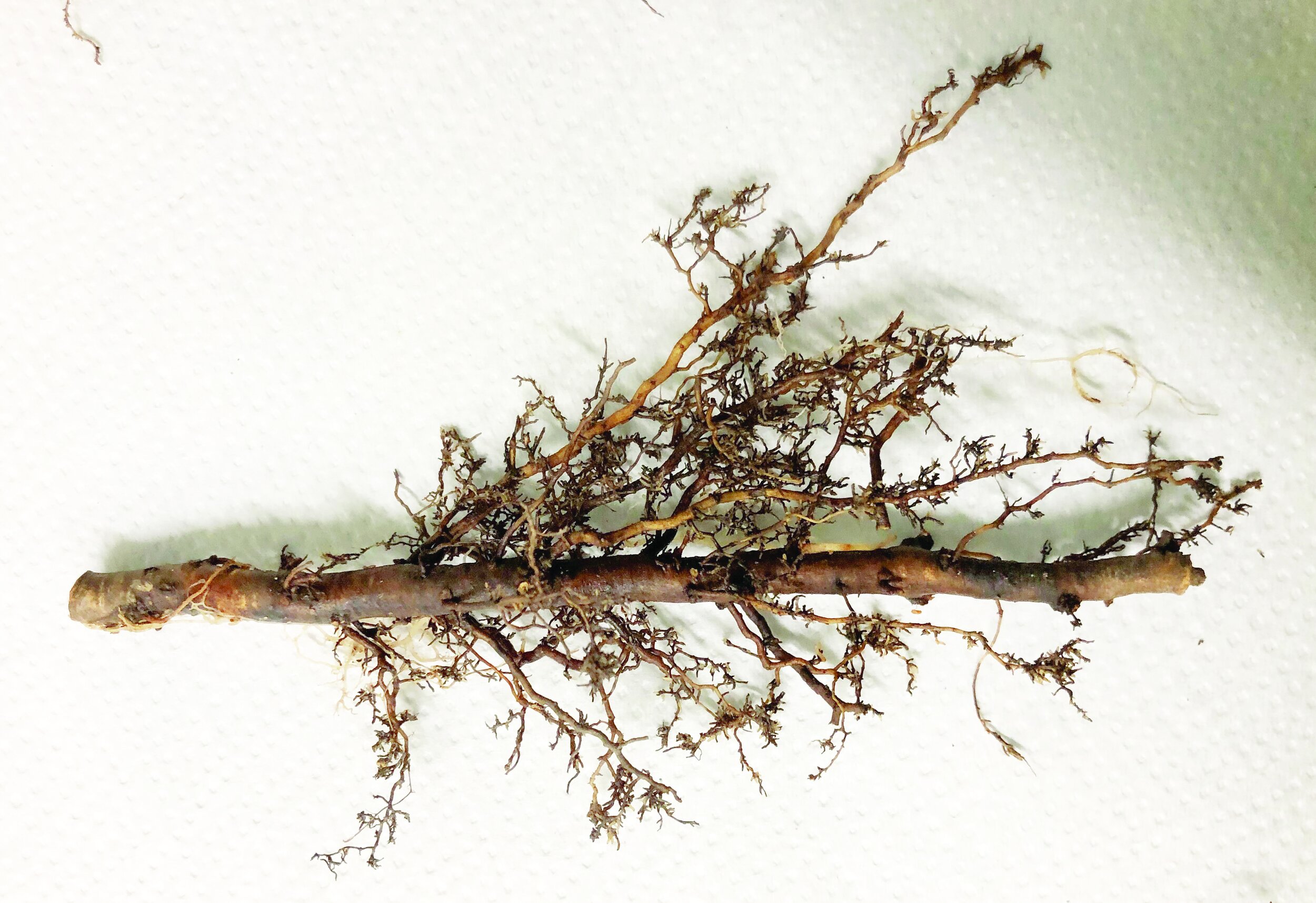Plant-parasitic nematodes difficult to identify and control
/by Sajid Rehman
Plant-parasitic nematodes are soil-inhabiting microscopic worms with a body length of less than one millimetre. They are ubiquitous, found in all climates and every type of soil. They use a stylet – a needle-shaped structure – and a battery of proteinaceous enzymes to puncture and parasitize roots and underground parts (such as rhizomes and tubers) of live host plants.
Based on their feeding behaviour, they can be classified into ectoparasites, migratory endoparasites, and sedentary endoparasites.
The ectoparasites (such as Dagger nematodes or Xiphinema spp.) remain in the soil and feed on the epidermal or the outer cortical cells of roots. Migratory endoparasitic nematodes (such as Root lesion nematodes or Pratylenchus spp.) penetrate roots and feed on cell contents, but they remain mobile and can switch their feeding site. Sedentary endoparasitic nematodes (such as Root knot nematodes and Cyst nematodes) become sedentary after root penetration and remain associated with their feeding sites. A proper identification of nematode species diversity and population density is important for their effective management.
Plant-parasitic nematodes rank among the most difficult pests to diagnose, identify, and control because they’re underground. Their effects are often underestimated by farmers, agronomists, and pest management consultants. Plant-parasitic nematodes have been reported to reduce global agricultural production by 12 percent, with annual crop losses worth $173 billion globally.
SYMPTOMS
The damage caused by nematodes is often non-specific and easily confused with symptoms of other abiotic or biotic stresses. For example, chlorosis (yellowing) of leaves may be attributed to nitrogen deficiency, but nematodes may be the cause. Similarly, a poor crop stand in small patches may be attributed to poor soil fertility or moisture stress, but nematodes can also cause identical symptoms.
Some of the above-ground symptoms associated with nematode feeding of roots are chlorosis of foliage, patchy/stunted growth, wilting, leaf rolling, dieback of perennial or woody plants, reduced fruit and seed size, failure to respond to fertilizers, higher density of weeds than the actual crop, and greater disease incidence to other fungal and bacterial pathogens.
Below-ground symptoms on the roots may be more specific and require careful uprooting of plants to identify. These symptoms may include galling, shortened, stubby, or abbreviated roots, excessive root branching, root lesions, tuber necrosis, tuber cracking, forking of carrots, cysts or “pearly” root, and altered root architecture.
HOST RANGE
Plant-parasitic nematodes differ in their host range. Some species of Root knot nematodes (M. arenaria, M. hapla, M. incognita, and M. javanica) have a wide host range (more than 500). However, some species have a restricted host range (M. partityla, M. kralli, and M. ichinohei). Similarly, potato cyst nematode (G. rostochiensis and G. pallida) has a restricted host range (Solanaceous family members), whereas H. schachtii (Beet cyst nematode) can parasitize about 218 plant species.
Their host range aspect can help in their effective management by including a proper crop rotation in the integrated pest management (IPM) program. These cover crops are non-hosts or aren’t susceptible to nematodes and limit their survival and reproduction. For example, the Canadian forage pearl millet 101 (CFPM 101) effectively reduces the population density of Root lesion nematodes. Likewise, Sudan grass, barley, oats, and rye are effective in reducing the population density of Root knot nematodes. In addition, marigold has been proven to be effective against different species of parasitic nematodes.
CONTROL STRATEGY
Correct species identification of plant-parasitic nematodes is crucial to devise any control strategy.
Nematode control options depend on the intensity of cropping and the value of the crop. In the case of field crops, the use of nematicide is not cost-effective on a large area. Thus, the use of crop rotation and resistant varieties seems to be a good strategy. In the case of intensively managed horticultural and ornamental crops, nematicides and soil fumigants had been preferred. But due to health and environmental concerns, many of the effective fumigants such as methyl bromide have been withdrawn from the market. More attention has been given to IPM to reduce the nematode population density based on a tolerable economic threshold.
The success of IPM depends on good sampling protocols for estimating the nematode population density and distribution pattern. Accurate estimates of nematode population density require soil analysis by a standardized lab.
In reality, the relationship between nematode numbers and yield is quite complex, and it depends on prevailing field conditions such as soil texture, soil pH, cultivar resistance status, soil nutritional status, and available moisture. Sandy soils inherently have less moisture and limited nutrients available, and, in this case, the economic threshold of nematodes will be low. But clay loam soils hold more moisture and nutrients, and the crop can tolerate a much higher number of nematodes.
Some of the important cultural control strategies include using nematode-free planting stock, following a proper crop rotation, planting in well-drained soils with limited periods of soil saturation, and maintaining soil structure by adding organic matter.
SOIL SAMPLING
Nematode populations are not evenly distributed in a field. The number of soil samples taken from an area will determine how precise the population density estimate is. It’s very important to follow a consistent sampling style and pattern. Larger fields should be divided into units of one hectare, and these units should be sampled separately.
Generally, 10 to 50 sub-samples (cores) are taken from one-half to one hectare of land at a soil depth of 10-20 centimetres. After combining and mixing the sub-samples, a composite sample of one to two kilograms is submitted to the lab for estimating nematode population density. Depending on the crop, 25-100 grams of composite root sample is sufficient to determine the nematode population density in the roots.
Nematodes are quite sensitive to environmental conditions, and the soil sample should be put in a plastic bag and stored under shade or in an insulated container. A sample can be stored for a maximum period of two weeks in a refrigerator. The root sample should always accompany soil; otherwise, nematodes can desiccate and die. Soil samples can be taken using an auger, corer, spade, or similar implement that is suitable for the crop being sampled. Care should be taken not to sample dead plants and from too wet or too dry soil. In the case of annual crops, a soil sample should be taken just before or after harvest. But in the case of perennials, a soil sample should be taken during the growing season when the plant is actively growing. The nematode population tends to drop during fall and early spring.
NEMATICIDES
Nematicides are chemical compounds that are lethal to nematodes (prevent respiration), whereas a “nematistat” is a chemical compound that at sub-lethal doses disrupt nematode behaviour, making them unable to locate their host plants. The biochemical effect of a nematistat is reversible and the nematode population often bounces back after a few months.
Nematicides can be applied as pre-plant soil fumigants where the entire field is treated and sealed or they can be applied on the foliage, in drenches (at the base of the plants), or by chemigation (mixed with irrigation water).
The effectiveness of soil fumigants can be greatly influenced by several soil factors, including texture, structure, organic matter, moisture content, and temperature at the time of application. Coarse-textured soils can generally be fumigated more easily than fine-textured (clay) soils, as the coarse sandy soils contain more voids per unit volume. Unfortunately, this also makes them more reliant on good sealing. Clay and organic matter can adsorb large quantities of the applied chemical, making it necessary to apply it at a higher rate.
Similarly, soil compaction can restrict gaseous movement and result in poor fumigant penetration and thus poor nematode control. It is useful to maintain soil moisture between 30-70 percent of field capacity. The label should be followed strictly as subsequent planting shortly after fumigation can cause phytotoxicity in emerging young plants. The application method depends on the crop of interest and nematode species. It’s recommended to incorporate nematicides to a depth of 5-15 cm depending on the crop and the nematode species being addressed. A shallow incorporation will not treat enough soil to give satisfactory returns in terms of crop yield and nematode control.
An integrated approach should be targeted to maintain the nematode population density below economic thresholds. Reliance only on nematicides can disrupt the soil health by targeting beneficial micro-organisms in the soil. Before planting, it’s important to estimate nematode population density and species diversity with the help of a recognized lab such as Perennia’s plant health lab.
(Dr. Sajid Rehman is a plant pathologist with Perennia Food and Agriculture Inc.)













